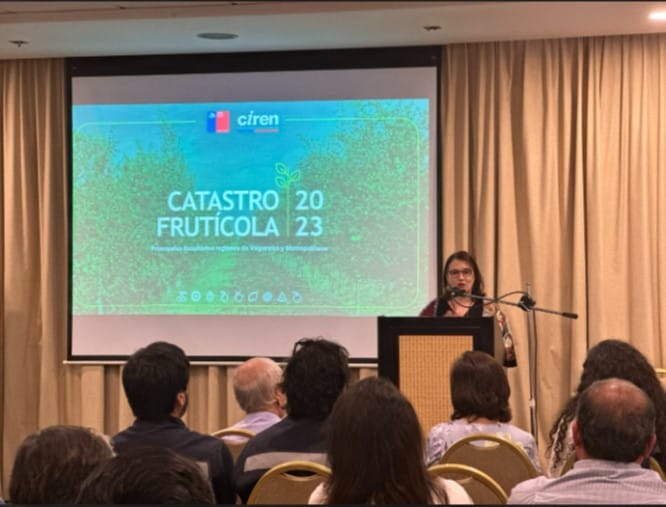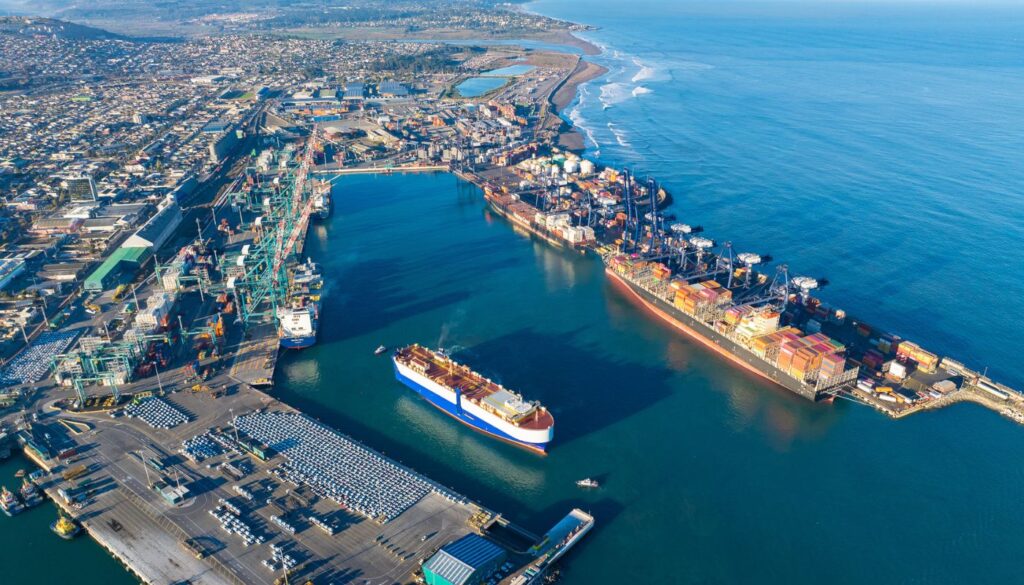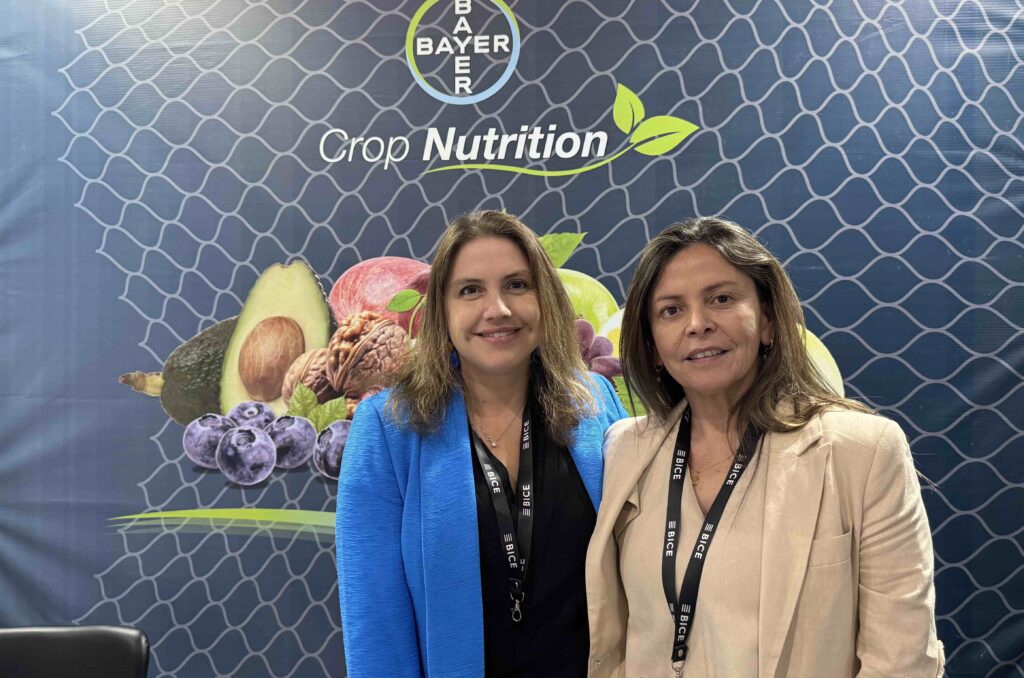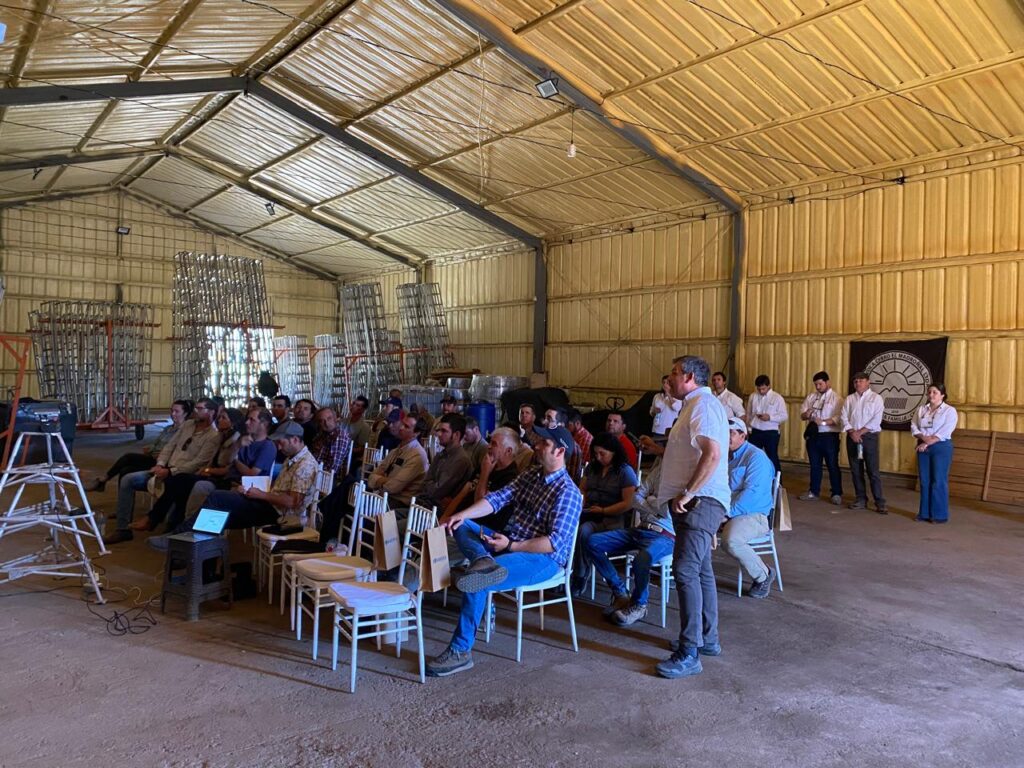Every year, Odepa commissions Ciren to compile the Fruit Cadastre for various areas of the country. This research gathers information on the planted area of the different species, the area of fruit trees by irrigation method, the production of the farms and their destination, and information on the installed capacity of infrastructure and agroindustry in each region.
At an event held in the city of Los Andes, the deputy director of the Office of Agricultural Studies and Policies (Odepa), Daniela Acuña, and the director of the Natural Resources Information Center (Ciren), Katherine Araya, presented the results of the fruit registries of the Valparaíso and Metropolitan regions.

Daniela Acuña, deputy director of Odepa, said that "The updating of fruit registers becomes relevant in the context of Climate Change, since having timely and updated figures allows for better decisions to be made and public policies focused on the sector to be adjusted."
Katherine Araya, director of Ciren, indicated that "We are very pleased with the collaborative work between Odepa and Ciren, which has become a visualizer where the country's producers can see the data from this registry online. We launched this event in Los Andes to democratize the information and bring it to the field."
The Metropolitan Region had a fruit-growing area of 54,472 ha, 0.3% less than the previous registry (2020), and the Valparaíso region registered 46,764 ha, 4.7% less than in 2020. In both regions, there was a decrease of 1,550 ha in Valparaíso and 1,537 ha in the Metropolitan Region for table grapes, with increases in the latter of 1,750 ha of cherry trees.
The results for the Metropolitan Region indicate that the main planted species are: walnut with 15,521.6 ha, cherry with 5,429.9 ha, table vine with 5,309.7 ha, olive with 4,904.9 ha, lemon with 4,009.7 ha, avocado with 4,736 ha, almond with 3,135.9 ha, orange with 2,857.4 ha and European plum with 2,470.6 hectares.
The most planted species in the Valparaíso Region are: avocado with 20,434 ha, table grape with 8,413 ha, walnut with 6,307 ha, mandarin with 2,576 ha, lemon with 2,543 ha, canning peach with 1,551 ha, orange with 1,174 ha and almond with 1,061 hectares.
Background
Every year, Odepa commissions Ciren to compile the Fruit Cadastre for various areas of the country. This research gathers information on the planted area of the different species, the area of fruit trees by irrigation method, the production of the farms and their destination, and information on the installed capacity of infrastructure and agroindustry in each region.
In this context, Odepa commissioned Ciren to carry out the Fruit Cadastre in the Valparaíso and Metropolitan regions, with the aim of keeping this survey up to date. This information is available on the Odepa and Ciren websites, and can be consulted online by cross-checking different variables.
The results of the land registers allow the private sector to make better decisions regarding fruit growing, and the public sector can optimize sectoral public policies and act in the face of emergencies that shake the country, being a basis for estimating the impacts resulting from the different events that have hit the country.
The fruit registers are updated every three years in each region and cover Arica and Parinacota and Tarapacá, and from Atacama to Aysén. A field survey is carried out on all farms with fruit plantations of more than 0.5 hectares and on all fruit industries, highlighting packing plants, cold storage facilities and agro-industries. The strategy of grouping regions is based on maintaining a balanced annual survey load. The survey of surface variables by species and variety, production data, irrigation systems, and infrastructure, among others, is highlighted. The information collected is georeferenced at a level of detail of plots within the farms, which allows the information to be displayed spatially on maps and cartography.
Having updated statistics on the fruit sector and its industry is of great importance to support the management of both public and private policies and investments, considering that in 2022 this sector contributed 7,521 million USD with a share of 40% in total exports of the forestry and agricultural sector. On the other hand, this updated regional information allows us to give signals on trends in fruit growing, the degree of replacement of species and varieties, labor needs, use of water resources and inputs for the fruit sector.
The main destinations for fresh fruit in value for 2022 are China 40.51 TP3T, the United States 19.31 TP3T, the Netherlands 5.11 TP3T and Brazil 2.7 1 TP3T










